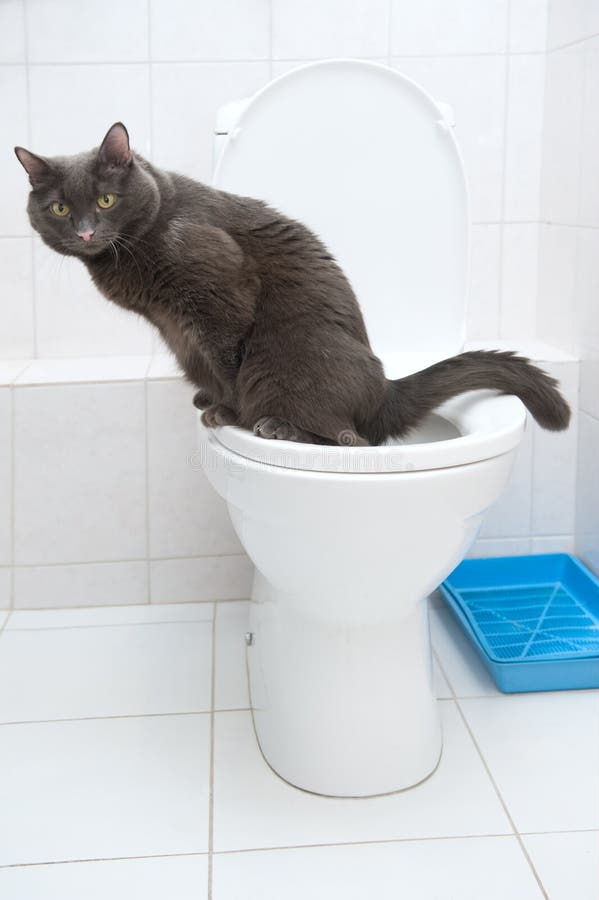Which Flushing Animal Waste Down the Toilet May be Harmful
Which Flushing Animal Waste Down the Toilet May be Harmful
Blog Article
Are you on the lookout for related information concerning 10 Things You Should Never Flush Down The Toilet?

When it pertains to getting rid of waste, particularly animal waste, lots of people typically turn to the practical choice of flushing it down the commode. Nonetheless, this relatively very easy solution can have significant consequences for the environment and public health. In this post, we'll discover why flushing pet waste down the bathroom is a poor concept and supply alternate techniques for correct disposal.
Introduction
Appropriate waste disposal is important for preserving ecological sustainability and public health. While it might seem safe to purge animal waste down the commode, it can cause various concerns, both for the environment and human health.
Threats of flushing animal waste
Ecological influence
Flushing pet waste presents unsafe microorganisms and microorganisms into waterways, which can negatively impact water environments. These virus can infect water sources and injury marine life, interrupting fragile communities.
Public health problems
Pet waste includes hazardous microorganisms such as E. coli and Salmonella, which can pose major health risks to human beings. Purging animal waste down the commode can infect water products, causing the spread of diseases and infections.
Alternatives to flushing
Instead of flushing pet waste down the toilet, there are a number of alternate disposal approaches that are extra environmentally friendly and sanitary.
Composting
Composting pet waste is an environment-friendly way to throw away it. By composting, organic matter is broken down right into nutrient-rich soil, which can be used to feed gardens and plants.
Garbage dump disposal
Disposing of animal waste in a land fill is one more alternative. While not as environmentally friendly as composting, it is a safer alternative to flushing, as it prevents the contamination of water sources.
Family pet waste disposal systems
There are specialized pet dog waste disposal systems readily available that safely and hygienically take care of pet waste. These systems typically utilize enzymes to break down waste and eliminate smells.
Steps to proper pet waste disposal
To guarantee proper disposal of animal waste, follow these steps:
Scooping and bagging waste
Routinely scoop and bag pet waste utilizing eco-friendly bags. This prevents waste from infecting the atmosphere.
Using designated waste bins
Dispose of bagged pet waste in assigned waste bins, such as read more garden compost containers or landfill bins. Avoid flushing it down the bathroom whatsoever expenses.
Cleansing can and pet dog locations routinely
Routinely clean litter boxes and family pet locations to avoid the buildup of waste and bacteria. Usage pet-safe cleansing items to keep hygiene.
Advantages of proper disposal methods
Adopting correct disposal techniques for animal waste offers numerous benefits:
Decreased environmental pollution
Appropriate disposal approaches minimize the threat of environmental pollution, protecting rivers and ecosystems from contamination
Minimized risk of water contamination.
By avoiding flushing pet waste down the commode, the risk of water contamination is significantly reduced, safeguarding public health.
Enhanced cleanliness and hygiene
Proper disposal techniques advertise far better cleanliness and health, producing a much safer environment for both human beings and animals.
Final thought
To conclude, flushing pet waste down the toilet is harmful to the atmosphere and public health. By taking on alternative disposal techniques and following appropriate waste monitoring methods, we can decrease the unfavorable influence of animal waste and add to a cleaner, healthier planet.
What To Do With Dog Poo – The Do's And Don'ts Of Disposing Of Faeces
Dog poo bins
Some councils provide dedicated dog waste bins in popular dog-walking areas that can take dog poo that has been bagged but you can legally dispose of dog waste in any public litter bin, as long as it is securely bagged. This also applies to your wheelie bin at home.
Do not flush
Water companies do not recommend flushing dog faeces down the toilet because certain parasites can survive the water processing treatment and are potentially harmful to humans. You should also never consider flushing dog poo that has been bagged down the toilet as the bags will not break down and instead create severe blockages in the sewage system.
In the woods
The Forestry Commission promotes a ‘stick and flick’ method for dealing with waste in the woods. This means finding a stick and using it to flick any poo from off the path so that it is out of the way of other walkers. You could also bury it as long as it is not in an area where there might be livestock.
Livestock
Parasites found in dog poo can be transmitted to livestock if they inadvertently eat infected faeces that has been left on grazing land. This could result in the death of sheep or abortion in cattle so you should always make sure you pick up your dog’s waste in fields where livestock could be present.

Routinely clean litter boxes and family pet locations to avoid the buildup of waste and bacteria. Usage pet-safe cleansing items to keep hygiene.
Advantages of proper disposal methods
Adopting correct disposal techniques for animal waste offers numerous benefits:
Decreased environmental pollution
Appropriate disposal approaches minimize the threat of environmental pollution, protecting rivers and ecosystems from contamination
Minimized risk of water contamination.
By avoiding flushing pet waste down the commode, the risk of water contamination is significantly reduced, safeguarding public health.
Enhanced cleanliness and hygiene
Proper disposal techniques advertise far better cleanliness and health, producing a much safer environment for both human beings and animals.
Final thought
To conclude, flushing pet waste down the toilet is harmful to the atmosphere and public health. By taking on alternative disposal techniques and following appropriate waste monitoring methods, we can decrease the unfavorable influence of animal waste and add to a cleaner, healthier planet.
What To Do With Dog Poo – The Do's And Don'ts Of Disposing Of Faeces
Dog poo bins
Some councils provide dedicated dog waste bins in popular dog-walking areas that can take dog poo that has been bagged but you can legally dispose of dog waste in any public litter bin, as long as it is securely bagged. This also applies to your wheelie bin at home.
Do not flush
Water companies do not recommend flushing dog faeces down the toilet because certain parasites can survive the water processing treatment and are potentially harmful to humans. You should also never consider flushing dog poo that has been bagged down the toilet as the bags will not break down and instead create severe blockages in the sewage system.
In the woods
The Forestry Commission promotes a ‘stick and flick’ method for dealing with waste in the woods. This means finding a stick and using it to flick any poo from off the path so that it is out of the way of other walkers. You could also bury it as long as it is not in an area where there might be livestock.
Livestock
Parasites found in dog poo can be transmitted to livestock if they inadvertently eat infected faeces that has been left on grazing land. This could result in the death of sheep or abortion in cattle so you should always make sure you pick up your dog’s waste in fields where livestock could be present.

Hopefully you liked our part about . Thank you so much for spending some time to read through our article. I beg you take the time to promote this post if you enjoyed reading it. We recognize the value of reading our article about 10 Things You Should Never Flush Down The Toilet.
Book Report this page